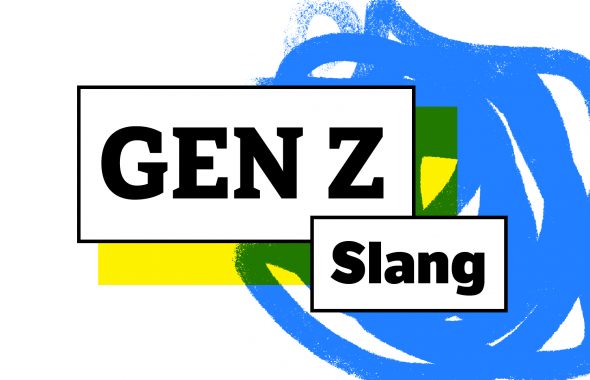by Taneesh Khera
Black English has a rich history that touches on everything from linguistics to literature to music—and, of course, the words we speak each and every day. Black English is also known as African American Vernacular English (AAVE), among other names, as discussed in the extensive historical usage note at its entry. This form of English is as complex, of course, as standard American English (SAE) and has many of its own distinct features.
Interestingly, defining AAVE as either a dialect of English, or a separate language altogether, depends on how you believe it began.
What is AAVE?
If you call AAVE a dialect, you many support the Anglicist Hypothesis that enslaved African people on Southern plantations acquired English from their British owners. This hypothesis was the widely held opinion of how AAVE evolved until the 1960s.
If you say it’s a language, though, you likely hold the Creolist Hypothesis view, that AAVE originated from a creole spoken on Southern plantations before the Civil War. A creole is a full language that develops from a pidgin, a super simple language created between two groups who need to communicate but don’t have a language in common. Linguists of this view say AAVE arose from a creole in West Africa that enslaved people already spoke before coming to the US.
Scholars still argue about what AAVE should be called, leaning one way or another at different times. In fact, in 1996 the school board in Oakland, California proactively, and unanimously, adopted the Creolist view. After three hours of hearing the arguments, the board revised literature to explicitly call AAVE a distinct language from SAE, recognizing it as the native language of around 30,000 African-American students within the school district. Hmm, is it just us, or is that the sweet taste of victory for diversity?
What do studies of AAVE show?
Dr. William Labov, creolist, sociolinguist, and professor at University of Pennsylvania, has spent his career studying linguistic change, starting with AAVE. It began in Manhattan, in a 1962 study that had him lurking through department stores across town, anonymously scribbling salespeople’s answers to his questions once he was out of their view. Oh, the things we do for science.
It was a landmark study, paving the way for further work on AAVE (and other minority language varieties) in the US. The plan: Ask each salesperson the same question and listen for the R in their reply. Then, ask them to repeat the answer to record the same phrase when they say it emphatically. The answer to the question: “fourth floor.”
In that study he found something odd. AAVE is a nonrhotic dialect, meaning the R isn’t pronounced (similar to Southern US dialects or British English). But, in the department store with more AAVE speakers, the number of Rs in emphatic speech rose to 18% (from 5% in casual speech). Labov concluded that at least some AAVE speakers understood emphatic speech to be rhotic (with the R pronounced), even though casual speech was nonrhotic.
What Labov found then, and what linguists see time and time again, is that context and environment affect speech. For AAVE speakers, it could be even more complex, because some also speak SAE and switch (or code-switch) between them, depending on the situation.
Going back to Labov, we could also realistically say the salespeople pronounced the R in emphatic speech when they realized the person asking was white. They could have thought Labov, a white man, didn’t understand the AAVE dialect, and then switched to SAE for emphasis.
How AAVE literature provides clues
It’s hard to separate stress in AAVE from the grammar, the two are so linked. Scholars like Toni Morrison, writer and winner of the Nobel Prize in literature, have spoken of five present tenses in AAVE. In reality it’s probably more than that, if you factor in stress. See our list of the many present-tense variations below (many also feature the mighty-fine be copula or linking verb). All tenses mean something slightly different, and some can’t be translated into SAE so easily.
- Final -s deletion: He work-∅. | He works.
- Copula deletion: He ∅ workin’. | He is working at this moment.
- Habitual “be”: He be workin’. | He is usually working.
- “Been” (always unstressed): He been workin’. | He has been working.
- BIN (always stressed): He BIN workin’. | He is working and has been for a long time.
- Finna: He finna work. | He is about to work.
The use of negatives in AAVE is also highly evolved. In Standard English two negatives equal a positive: I didn’t not see it means “I saw it.”
In AAVE, like in math, two negatives equal a negative. And, sometimes negation can be used for emphasis to mean a bigger, bolder No. It’s also like several other languages in that way, including French, Spanish, Polish, Persian, Middle English … you get the idea. The linguistic term is multiple negation, and languages that allow it are said to have negative concord. See some examples below, taken from Toni Morrison’s beautiful novel Sula. Central to it are themes explored in other novels by and about black people: home and identity, race, class, and self-evolution.
- “What you mean you didn’t mean nothing by it?”
- “Don’t you say hello to nobody when you ain’t seen them for ten years?”
- “Well, don’t let your mouth start nothing that your ass can’t stand.”
- “Ain’t no woman got no business floatin’ around without no man.”
AAVE phonology and hip-hop
Stress is part of phonology, which is really rich in AAVE. In listening to music and interviews with some of the most culturally influential artists in music today, artists like Jay-Z, Kanye West, the Wu-Tang Clan, and Nas, there are a few features that stand out:
- Consonant clusters simplify: perfek, projek, tes, wes, lef, han, des (instead of “perfect,” “project,” “test,” “west,” “left,” “hand,” and “desk”)
- The [ th ] sound changes to [ f ], [ v ], [ t ] or [ d ]: baf, movuh, fink, wit, and dis (for “bath,” “mother,” “think,” “with,” and “this”)
- Consonant clusters invert: poest and aks (instead of “poets” and “ask”) (this transposition of sounds is a form of what linguists call metathesis)
Hip-hop has done a lot to move our culture forward. Words and phrases that originate in hip-hop get siphoned into mainstream culture so quickly, speakers are constantly modifying and inventing vocabulary to keep representing Black culture accurately. But, hip-hop has always dealt with themes other genres shy away from, like race and racism, class, hierarchy, economic equality, financial freedom—to name only a few. For that, we all owe it thanks.
Want more?
For more from Taneesh Khera, read these: Louisiana Creole | Northern Cities Vowel Shift | Borders
Taneesh Khera is a poet and writer based in Oakland, CA. She’s also a linguist trained in the US, Mexico, and Chile. Se habla español. See more of her work here: taneeshcantos.com.














